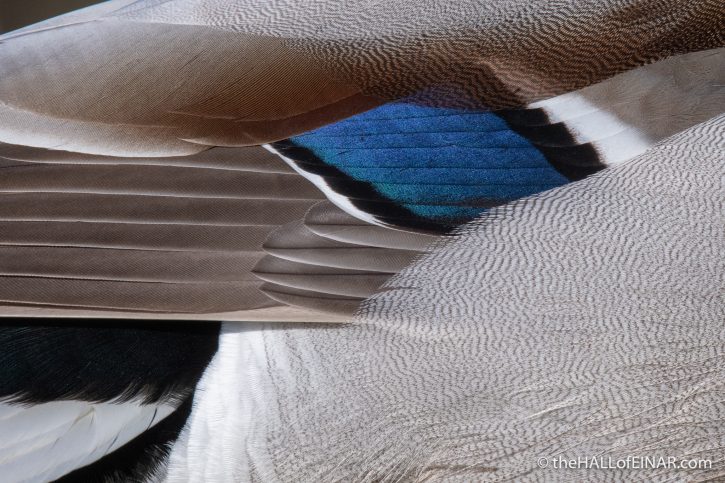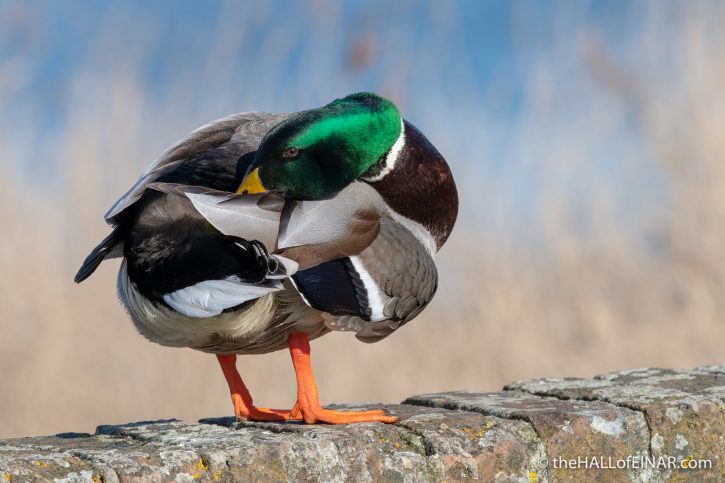Mallard malady
This male Mallard looks so healthy in the spring sunshine:

It takes a lot of nutritious food to make the complex chemistry of the iridescent plumage. It’s a great way of advertising your health and wellbeing to any prospective mates. It’s like saying: “I eat like a lord and have a bright green iridescent head to prove it. Have my babies”. Maybe that strategy wouldn’t work in humans. It’s so attractive to female Mallards that it’s worth taking the risk of being noticeable to predators by advertising yourself.
To keep in tip-top condition a drake needs to groom. Many birds have a preen gland near the base of their tail called a uropygial gland. Yes, I found it difficult to pronounce, too. I prefer to call it a grease nipple. This one is fastidious in spreading waxy oil all over itself, including on the back of its head:

A grease-nipple is a waterbird’s best friend.
Feather waxing helps keep a warm and waterproof bottom. Those ponds can get chilly. It also helps with flight if you have all your feathers ‘zipped’ together properly. This iridescent blue speculum is pretty impressive too:

I’ll leave him to his preening now.

This is one healthy looking duck.